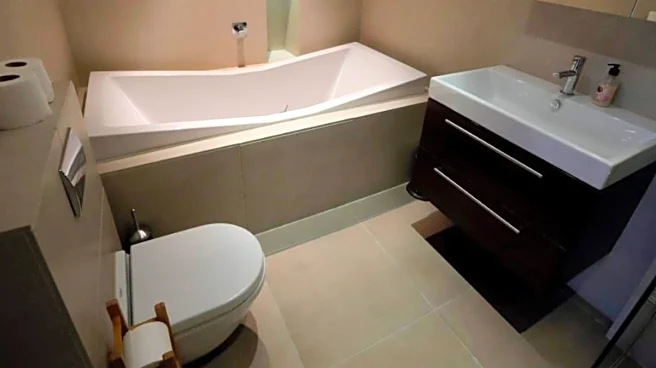As cities modernise and public facilities expand, toilets have become an omnipresent feature across streets, shopping malls, and restaurants in the country. Yet, despite their ubiquity, many remain unaware that these familiar spaces are referred to by a variety of names, each carrying a distinct historical and cultural nuance.
From the “bathroom” in your home to the “powder room” in a luxury hotel, these labels are more than mere semantics. Here’s a closer look at the subtle differences behind the terminology.
Bathroom: Traditionally, a bathroom is a room equipped with a bathtub or shower. In the United States and India, the term is widely used for any home toilet, even in the absence of a bathing facility. In most households, however, the toilet and bathing area
are combined, justifying the conventional use of the term.
Washroom: Commonly used in offices, schools, and factories, the term “washroom” highlights the functional aspect of hygiene, focusing on handwashing and basic sanitation rather than bathing. In India, this term is often preferred in professional or formal settings.
Restroom: In early 20th century America, the word “toilet” was considered indecent in public signage. Shopkeepers and theaters began using “restroom”, emphasising a polite invitation to “take a break”. The label persists today in public spaces such as malls, restaurants, and cinemas.
Lavatory: Derived from the Latin word lavare, meaning “to wash”, the term “lavatory” is typically used in constrained spaces such as airplanes and trains. Its brevity and formal tone make it suitable for travel settings where space is limited.
Powder Room: Originating in the 18th century, the “powder room” was a private space in wealthy households where women would refresh their makeup during social gatherings. Today, high-end restaurants and hotels retain the term to denote women’s restrooms, lending an air of elegance and sophistication.
From practicality to etiquette, these variations in nomenclature reveal a rich tapestry of social history, cultural sensibilities, and functional design.



/images/ppid_59c68470-image-176335506235480241.webp)

/images/ppid_59c68470-image-176343510573865706.webp)

/images/ppid_a911dc6a-image-176347642994561155.webp)

/images/ppid_a911dc6a-image-176342922774665134.webp)



/images/ppid_59c68470-image-176339752849313643.webp)



